Introduction
Polyester is used in a variety of clothing items, from everyday wear like shirts and dresses to glamorous evening gowns. While it looks smooth, it’s not naturally waterproof—water resistance often comes from items of clothing. Moreover, the low cost of raw polyester fibre has made it a star in textiles. It’s your key to Polyester’s traits, making process, uses, and eco-footprint.
Meet W.H. Carothers, the brain behind Polyester, who kicked it off as Terylene in 1926 in the UK. Since then, especially after World War II, Polyester has taken the stage, shaping the fabric of our everyday wear. Polyester, the king of versatile synthetics, is a common clothing fabric loved for its durability, affordability, and wrinkle-resistant nature.
| Fabric name | Polyester Fabric |
| Composition | Solo Act: 100% – wrinkle-fighting champion, perfect for activewear and travel. Team Player: Blends with cotton, wool, or spandex for comfort, warmth, or stretch. Green MVP: Recycled polyester gives plastic bottles a stylish second life. |
| Possible Thread Count Variations | Light and breezy: Around 70-100 threads per inch, ideal for sportswear and summer wear. Comfy and casual: 100-150 threads per inch, perfect for everyday shirts and dresses. Subtle sophistication: 150-250 threads per inch, offering a touch of elegance for blouses and jackets. Luxe and durable: 250+ threads per inch, for high-end activewear and wrinkle-resistant formal wear. |
| Moisture-wicking ability | Polyester fabric has high moisture-wicking ability, efficientlydrawing moisture away from the body to the fabric’s surface, where it can evaporate, keeping the wearer dry and comfortable. |
| Breathability | It has less breathability. |
| Heat Retention Ability | Layer up: Pair polyester with other fabrics depending on the weather. Use a cotton t-shirt underneath in warmer weather and a wool sweater over it in colder temperatures. Choose loose fits: Allows for better air circulation and prevents overheating. Look for advanced fabrics: Some high-performance sportswear uses specialized polyester blends with enhanced breathability and temperature regulation. Think of them as the cool kids of the polyester world. |
| Where was Polyester fabric first produced? | Polyester was laid in the United States. |
| Largest producing country | Polyester fabric currently belongs to China. |
| Recommended washing temperatures | Turn clothes inside out: This protects the fabric surface from abrasion and fading. Use a gentle detergent: Avoid harsh detergents that can damage polyester fibers. Opt for mild laundry detergents or those specifically formulated for synthetics. Skip the bleach: Bleach can weaken and discolor polyester. Stick to colour-safe alternatives for stain removal. Air dry whenever possible: High heat from dryers can shrink or damage polyester. Line dry your clothes in the shade, allowing them to breathe and retain their shape. |
- Introduction
- What is polyester fabric?
- What is Polyester fabric made of?
- Why Polyester Fabric, why not others?
- Is polyester fabric stretchy?
- How is Polyester fabric made?
- Types of Polyester:
- Commercial Applications:
- #1.Versatility:
- #2. Home Decor:
- #3. Polyester Bed Sheets:
- #4. Polyester Jackets:
- #5. Polyester Activewear:
- #6. Polyester Upholstery:
- #7. Microfiber Towels and Linens:
- #8. Athleisure Wear:
- #9. Uniforms:
- #10. Corporate Apparel:
- #11. Outdoor Clothing:
- #12. Casual Wear:
- #13. Children’s Clothing:
- #14. School Sports Uniforms:
- #15. Fashion Apparel:
- #16. Costume Design:
- #17. Medical Scrubs:
- #18. Swimwear:
- #19. Workwear:
- #20. Ties and Accessories:
- #21. Rainwear:
- #22. Hospital Gowns:
- #23. Event Decor:
- Successful Brands Utilising Polyester:
- Supplier Information and Location:
- Iconic Products Made from this polyester clothing fabric
- #1. Athletic Apparel:
- #2. Outdoor Jackets:
- #3. T-Shirts and Tops:
- #4. Swimwear:
- #5. Upholstery:
- #6. Bedding and Linens:
- #7. Curtains and Drapes:
- #8. Backpacks and Bags:
- #9. Rainwear:
- #10. Sleepwear and Pajamas:
- #11. Car Interiors:
- #12. Duffel Bags and Gym Gear:
- #13. Flags and Banners:
- #14. Medical Scrubs:
- #15. Hiking Gear:
- #16. Luggage:
- #17. Industrial Safety Clothing:
- #18. Tent Material:
- #19. Pet Accessories:
- #20. Fashion Accessories:
- FAQs About Polyester Fabric:
- Myths and Facts About Polyester Fabric:
- Conclusion
What is polyester fabric?
Polyester fabric is synthetic, this means that Polyester is not derived from natural resources like plants (cotton) or animals (wool). It is created by chemically transforming materials derived from petroleum into lengthy chains of molecules known as polymers. Following that, these polymers are knitted or woven into a range of textiles with distinctive textures and uses.
Uses:
- Clothing: Shirts, pants, dresses, activewear, swimwear, jackets, you name it Polyester’s durability and wrinkle resistance make it ideal for everyday wear and travel.
- Home textiles: Bedding, curtains, carpets, upholstery – polyester’s easy-care nature and stain resistance make it a practical choice for home decor.
- Industrial applications: From sails and ropes to filtration and medical textiles, polyester’s strength and versatility find uses beyond the world of clothing.
Types:
- Microfiber: Superfine and incredibly soft, often used in activewear and loungewear.
- Fleece: Warm and fuzzy, perfect for sweaters, jackets, and blankets.
- Satin: Silky and smooth, sometimes used in blouses and dresses.
- Ripstop: Tear-resistant, ideal for outdoor gear and luggage.
- Blends: Often combined with natural fibres like cotton or wool for added comfort and breathability.
Pros:
- Durable and long-lasting
- Wrinkle-resistant and easy-care
- Affordable and readily available
- Moisture-wicking, good for activewear
- Stain-resistant
- Wide variety of textures and weights
Cons:
- Not as breathable as natural fibres
- It can trap heat and sweat
- May feel less luxurious than natural fibres
- Can be prone to static cling
- Environmental concerns regarding production and microplastics
What is Polyester fabric made of?
Petroleum-derived chemicals with an ester functional group comprise the majority of the synthetic substance known as polyester. While some kinds are biodegradable, most contribute to pollution.
Polyester and cotton are commonly combined for improved properties to produce a textile that is widely utilised and versatile. 100% polyester fabric is a term for a textile composed entirely of polyester fibres; it is a synthetic substance derived from petrochemicals.
In contrast to blended textiles, which combine different fibres, 100% polyester indicates that every thread in the fabric is composed of polyester. Polyester is a very versatile material used in the textile industry for a variety of products, such as clothing, household furnishings, and industrial goods.
Polyester, the ubiquitous fabric of modern wardrobes, reigns supreme in the realm of practicality and affordability. But what exactly makes up this wrinkle-resistant wonder Let’s unravel the fabric’s origins and explore its diverse forms:
Birth of a Fabric:
Polyester isn’t a gift from nature, but a product of human ingenuity. It’s a synthetic fabric, born from petroleum-based chemicals. These chemicals undergo a series of reactions to form long chains of molecules called polymers, which are then woven into fabric.
Types of Polyester Fabrics:
- 100% Polyester: This purebred polyester offers maximum durability, wrinkle resistance, and stain resistance. Think sporty activewear, travel-friendly shirts, and functional outerwear.
- Polyester Blends: Blending polyester with natural fibres like cotton or wool adds a touch of comfort and breathability. These blends are common in casual wear, sportswear, and even dressy attire.
- Polyester-Spandex Blends: Enter the stretchy sidekick, spandex! Q12wq `z Blending polyester with spandex creates fabrics that move with you, perfect for activewear, leggings, and swimwear.
Beyond Clothing:
Polyester’s versatility extends far beyond your closet. It finds its way into home textiles like carpets, curtains, and bedding, thanks to its easy-care nature and stain resistance. Even industrial applications, from ropes and sails to filtration systems and medical textiles, benefit from polyester’s strength and adaptability.
Pros and Cons:
Pros:
- Durable and long-lasting: Polyester outlasts many natural fibres, making it a worthy investment.
- Wrinkle-resistant and easy-care: Say goodbye to ironing! Polyester stays wrinkle-free and washes like a dream.
- Affordable: Often cheaper than natural fibres, polyester makes stylish choices accessible.
- Moisture-wicking: Ideal for activewear, polyester draws sweat away from your skin.
- Stain-resistant: Spills happen, but polyester shrugs them off with ease.
- Variety of textures and weights: From silky satins to cozy fleeces, polyester offers something for everyone.
Cons:
- Not as breathable as natural fibres: Polyester can trap heat and sweat, making it less comfortable in hot weather.
- May feel less luxurious: Compared to natural fibres like silk or wool, polyester can feel less soft and luxurious.
- Environmental concerns: The production and disposal of polyester raises concerns about sustainability and microplastics.
Why Polyester Fabric, why not others?
Is it polyester or nylon?
Depending on the intended purpose, nylon or polyester should be used. Due to its strength, suppleness, and resistance to wear, nylon is a popular material for outdoor equipment like backpacks and tents.
However, polyester is frequently used for fitness and outdoor clothes due to its ability to drain away moisture and resistance to mildew.
Cotton or polyester?
Depending on the necessary qualities, polyester or cotton should be chosen. Polyester is a good material for sportswear and outdoor applications since it is strong, crease-resistant, and quick to dry. Because cotton is soft, absorbent, and breathable, it’s a great material for casual clothing and warm weather.
Polyester or rayon?
Depending on the situation, rayon or polyester should be used. Rayon is a semi-synthetic fabric that works well for summer clothes since it is cosy and breathable. Polyester is frequently used for outdoor and sportswear since it is strong and wrinkle-resistant.
By choosing products manufactured from recycled polyester and supporting programmes that encourage sustainable practices in the textile sector, consumers may take an active role in the recycling of polyester.
Recycling polyester fabric is becoming increasingly important as environmental concerns gain attention in the fashion and textile industries to create a more sustainable and environmentally friendly landscape.
Is polyester fabric stretchy?
Whether polyester fabric is stretchy depends on its composition and structure:
- Pure Polyester: In its natural state, pure polyester lacks inherent stretch. This is why 100% polyester clothes are known for their wrinkle-resistant and durable qualities, but can feel somewhat stiff and lack the give we often associate with stretchy fabrics.
- Blends and Treatments: However, the story doesn’t end there! Polyester’s versatility shines through in blends and treatments that enhance its stretch.
- Capabilities:
Blends with elastane or spandex: These fibers like Lycra are renowned for their elasticity, and when woven or knitted with polyester, they create fabrics with varying degrees of stretch, perfect for activewear, leggings, and swimwear.
Crimped fibers: A special treatment called crimping can be applied to polyester fibers, introducing tiny bends and kinks that give them a “springier” feel and add a slight amount of stretch to the final fabric.
Understanding the Label: Always check the care label of your polyester garment. It will typically mention the fabric composition and any special treatments like crimping. Look for keywords like “spandex blend” or “stretch polyester” to identify if the fabric offers the stretchiness you desire.
How is Polyester fabric made?
Polyester’s journey from petroleum to your comfy shirt is quite the transformation Here’s a breakdown.
The Big Picture:
- Extraction: Crude oil undergoes refining to extract chemicals like terephthalic acid and ethylene glycol.
- Polymerization: These chemicals react under high temperatures and pressure, forming long chains called PET (polyethene terephthalate) polymers.
- Spinning: Molten PET is extruded through tiny holes, forming fine, thread-like filaments. These filaments are cooled and dried into solid fibres.
- Weaving or Knitting: Depending on the desired fabric texture, fibres are woven or knitted into various patterns, creating the base fabric.
- Finishing: Treatments like dyeing, wrinkle resistance, and waterproofing can be applied to the fabric.
Special Touches:
- Recycled Polyester: Plastic bottles and other PET waste can be recycled into new fibres, reducing environmental impact. Look for garments labelled “recycled polyester” to make conscious choices.
- Waterproof Polyester: A coating like polyurethane (PU) is applied to the fabric, creating a barrier against water while still allowing some breathability. Perfect for rainwear and outdoor gear.
- Textured Polyester: Fibers can be manipulated during production to create different textures, like fleece, chenille, or even faux suede. This adds visual and tactile interest to the fabric.
Remember: The specific processes and details may vary depending on the manufacturer and the desired properties of the final fabric.
Stage 1: Extraction and Purification
- Crude Oil Refining: Crude oil undergoes a complex refining process to separate various chemicals. Two key components of polyester production are:
- Terephthalic Acid (PTA): Extracted from purified xylene
- Ethylene Glycol (EG): Derived from natural gas or petroleum.
- Purification: Both PTA and EG undergo further purification to remove impurities that could affect the final polymer quality.
Stage 2: Polymerization
- Esterification: PTA and EG react together under high temperature and pressure in the presence of a catalyst. This forms a substance called PET (polyethene terephthalate).
- Polycondensation: PET undergoes further heating and pressure, causing the shorter molecule chains to link together and form long, strong polymer chains.
Stage 3: Spinning and Cooling
- Molten PET: The hot, viscous PET melt is extruded through spinnerets with tiny holes.
- Solidification: As the hot filaments leave the spinnerets, they are cooled by air or water, solidifying into long, continuous fibres.
Stage 4: Textile Formation
- Drawing and Texturing: The fibre can be stretched further to increase its strength and orientation, influencing the final fabric properties. Some fibres may be crimped or textured to create specific characteristics like bulkiness or softness.
- Yarn Making: Individual fibres are twisted together to form yarns of varying thicknesses and textures.
- Weaving or Knitting: Yarns are woven or knitted on looms or knitting machines to create the final fabric structure.
Stage 5: Finishing and Treatment
- Dyeing and Printing: Fabrics can be dyed or printed with various colours and patterns.
- Finishing Treatments: Depending on the desired properties, various finishes like wrinkle resistance, flame retardancy, water repellency, or anti-bacterial coatings can be applied.
Special Considerations:
- Recycled Polyester: Plastic bottles and other PET waste can be recycled into new fibres, reducing environmental impact and resource consumption. Look for garments labelled “recycled polyester” to make sustainable choices.
- Blends: Polyester is often blended with natural fibres like cotton or wool to achieve a combination of desired properties, such as breathability, comfort, and wrinkle resistance.
Types of Polyester:
- Ethylene Polyester (PET): Most popular, synonymous with polyester.
- PCDT Polyester: More elastic, ideal for heavy-duty applications.
- Plant-Based Polyester: Biodegradable, made from sources like cane sugar.
Commercial Applications:
Polyester clothing fabric is widely utilized in various commercial applications due to its versatility, durability, and performance characteristics. Here are several commercial applications for polyester clothing fabric:
#1.Versatility:
Polyester’s commercial applications are widespread, ranging from everyday clothing to industrial uses such as packaging materials. Its versatility makes it a popular choice in various industries.

#2. Home Decor:
Polyester fabric is popular in home decor items, including curtains, upholstery, and cushions. Its resistance to environmental conditions makes it suitable for long-term use, and the fabric can be crafted into beautiful patterns and textures to enhance the aesthetic appeal of living spaces.
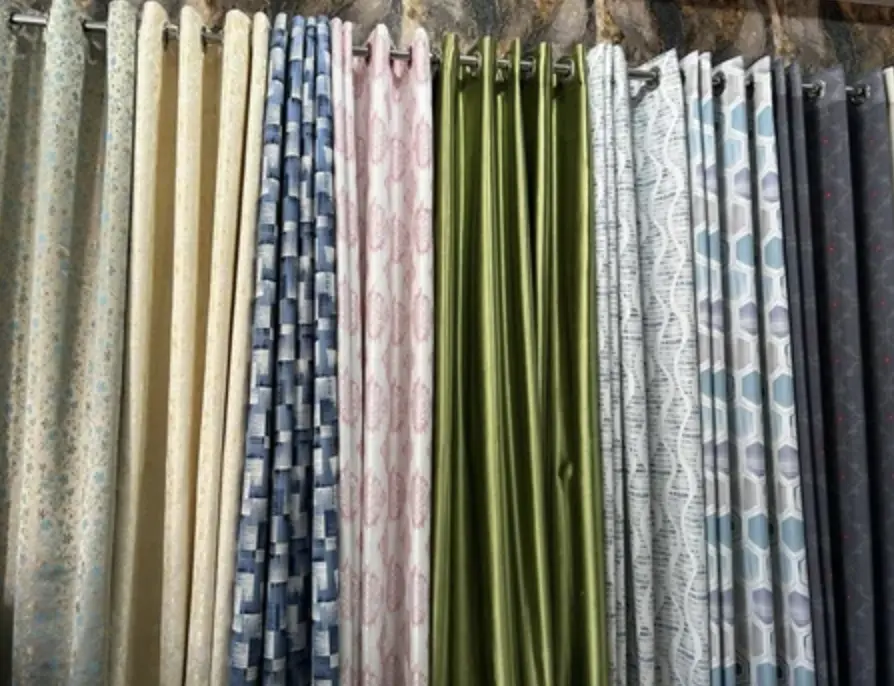
#3. Polyester Bed Sheets:
Durable, wrinkle-resistant bedding for long-lasting comfort. Polyester is commonly used in the production of blankets and bedding due to its warmth and durability. The fabric can be woven into visually appealing bed linens.

#4. Polyester Jackets:
Weather-resistant outerwear for various climates. Due to its resistance to environmental conditions, polyester is widely used in outdoor gear such as jackets, backpacks, and tents. The fabric’s ability to withstand wear and tear while maintaining its appearance makes it an excellent choice for adventurers who appreciate both functionality and style.

#5. Polyester Activewear:
Moisture-wicking fabric for comfortable workouts.Polyester’s moisture-wicking properties make it a popular choice for sportswear. It helps keep the body dry during physical activities, and its flexibility allows for comfortable movement. The fabric’s ability to retain vibrant colours adds to the attractiveness of sporty designs.
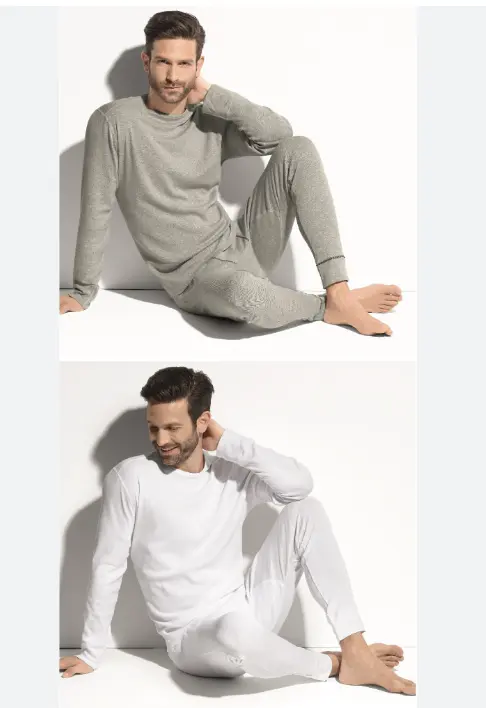
#6. Polyester Upholstery:
Stain-resistant and durable fabric for furniture. Polyester upholstery offers a durable and affordable solution for furniture, commonly seen in sofas, chairs, and other home furnishings. It provides a wide range of colours and patterns while maintaining resistance to stains and fading, making it a popular choice for both residential and commercial settings.

#7. Microfiber Towels and Linens:
Microfiber, a type of polyester, is known for its softness and absorbency. It’s commonly used in the production of towels, bed linens, and other home textiles. The fine fibres of microfiber allow for intricate designs and patterns, adding a touch of luxury to these everyday items.
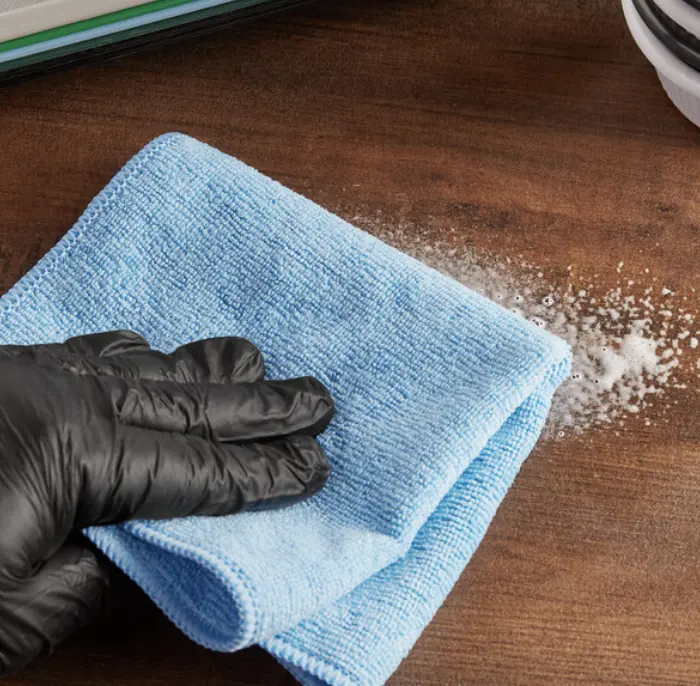
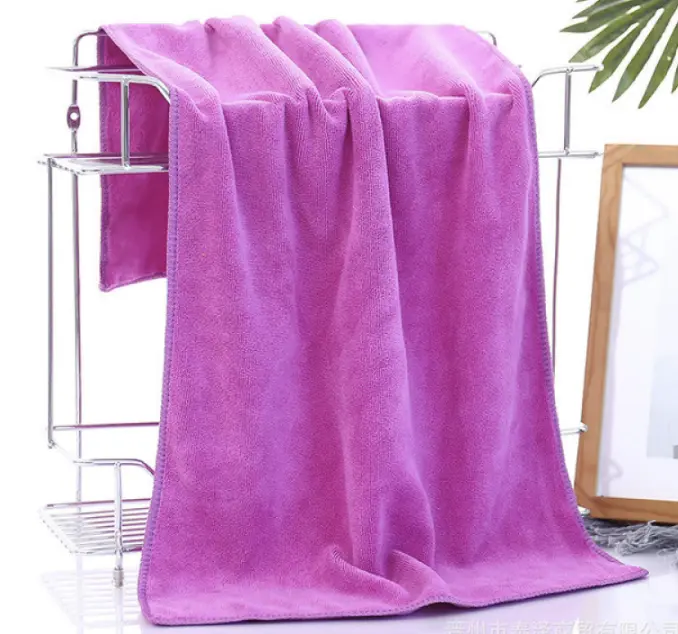
#8. Athleisure Wear:
The comfort and flexibility of polyester make it suitable for athleisure clothing, combining style with functionality.
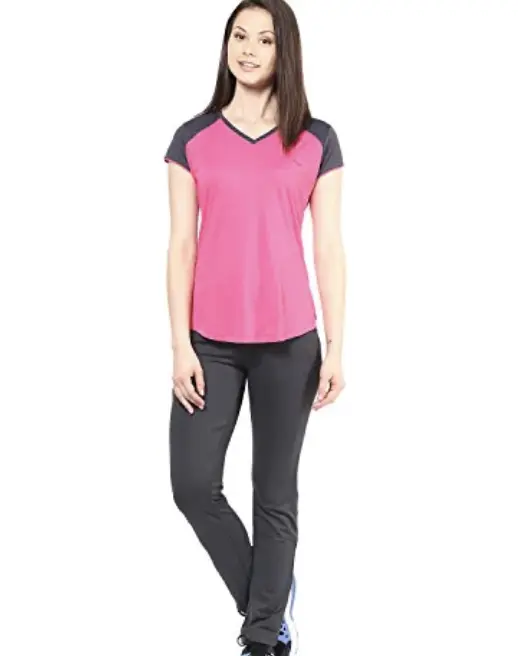
#9. Uniforms:
Polyester’s durability and colour retention make it an excellent choice for uniforms in industries such as healthcare, hospitality, and manufacturing.
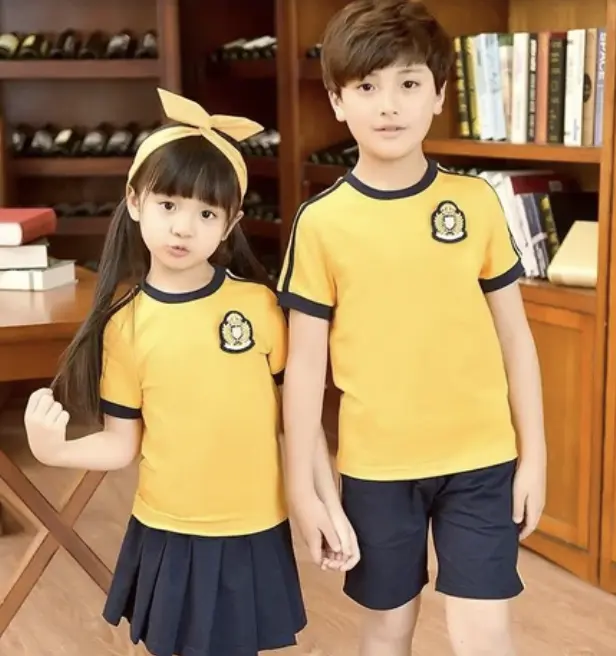
#10. Corporate Apparel:
Polyester clothing fabric is often used in corporate settings for shirts, blouses, and suits due to its professional appearance and easy care.
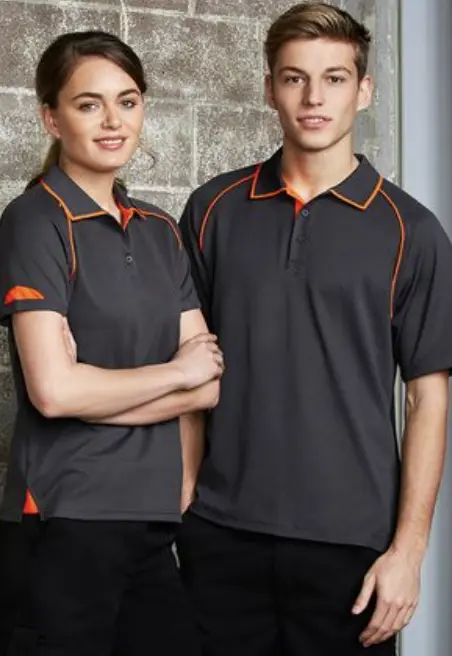
#11. Outdoor Clothing:
Polyester’s resistance to water and UV rays makes it ideal for outdoor clothing such as jackets, pants, and hiking gear.
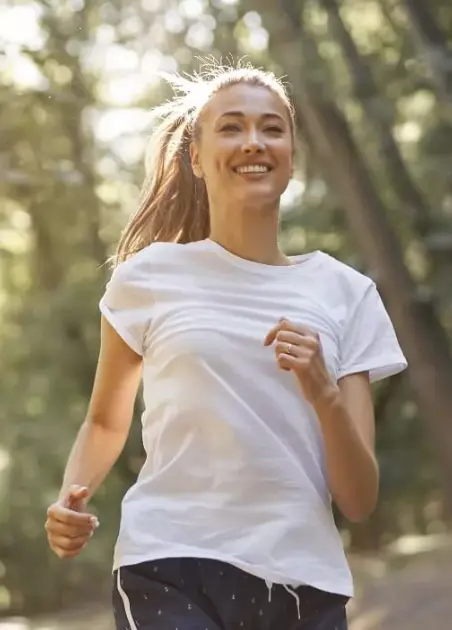
#12. Casual Wear:
Everyday casual wear, including T-shirts, hoodies, and jeans, often incorporates polyester for comfort and longevity.
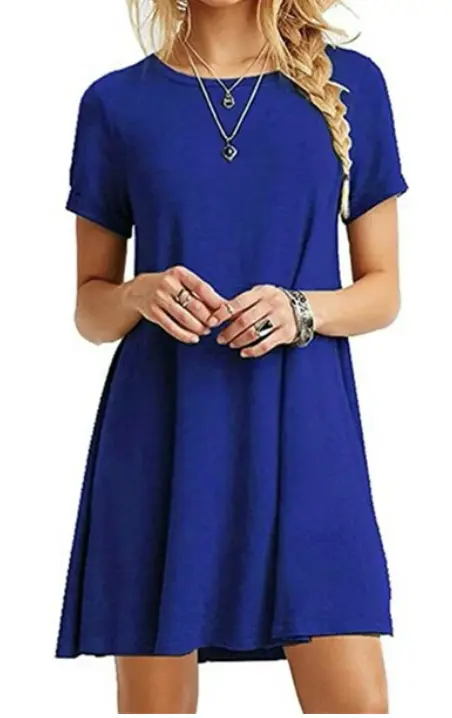
#13. Children’s Clothing:
Polyester’s stain resistance and durability make it a practical choice for children’s clothing, including school uniforms and playwear.
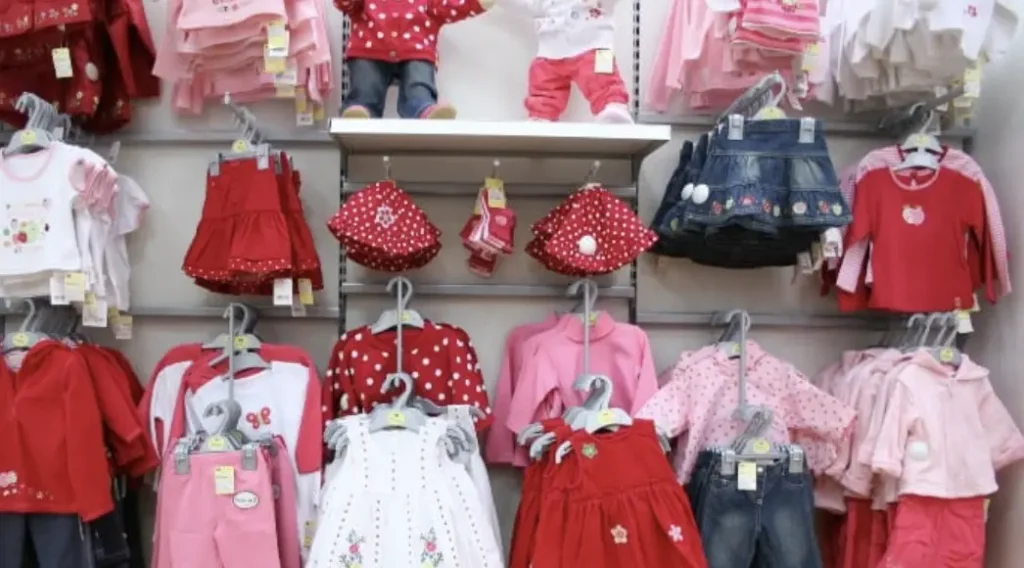
#14. School Sports Uniforms:
Polyester is commonly used in school sports uniforms for its moisture-wicking properties and vibrant colour options.
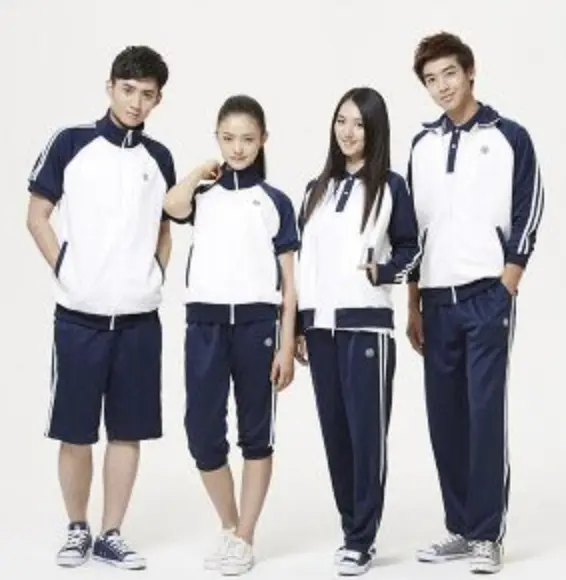
#15. Fashion Apparel:
Polyester is prevalent in various fashion garments, including dresses, skirts, and blouses, thanks to its versatility and affordability.
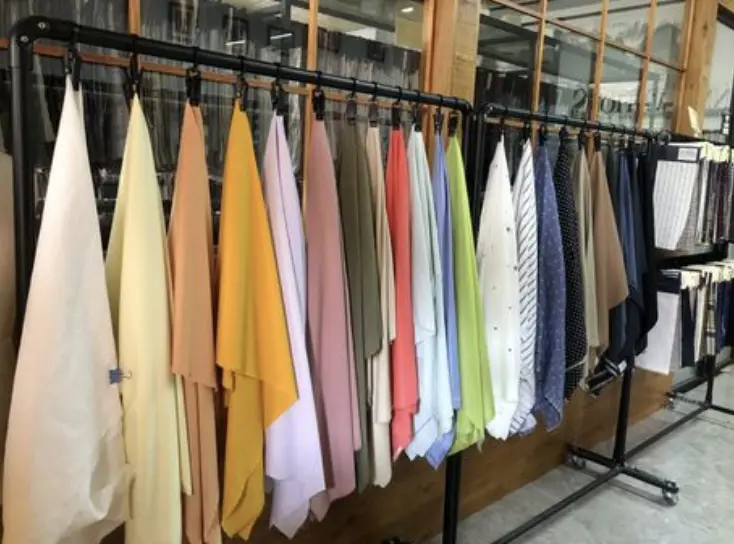
#16. Costume Design:
The wide range of colours and textures available in the polyester fabric makes it a popular choice for costume designers in the entertainment industry.
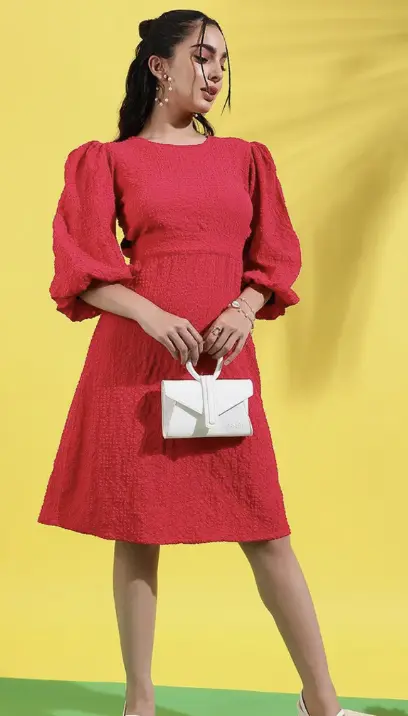
#17. Medical Scrubs:
Polyester’s durability and resistance to stains make it suitable for medical scrubs worn in healthcare settings.

#18. Swimwear:
Polyester is used in the production of swimwear due to its quick-drying properties and resistance to chlorine and saltwater.
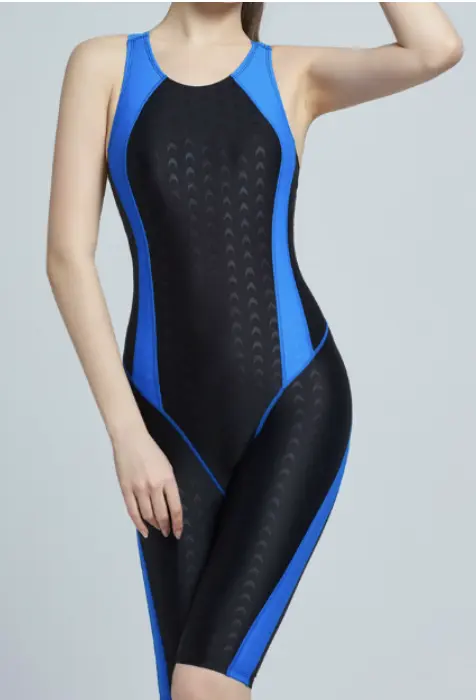
#19. Workwear:
Polyester clothing fabric is often incorporated into workwear such as coveralls, vests, and jackets for its durability and ease of maintenance.

#20. Ties and Accessories:
Polyester is used in the manufacturing of ties, scarves, and other accessories for its ability to hold vibrant colours and patterns.
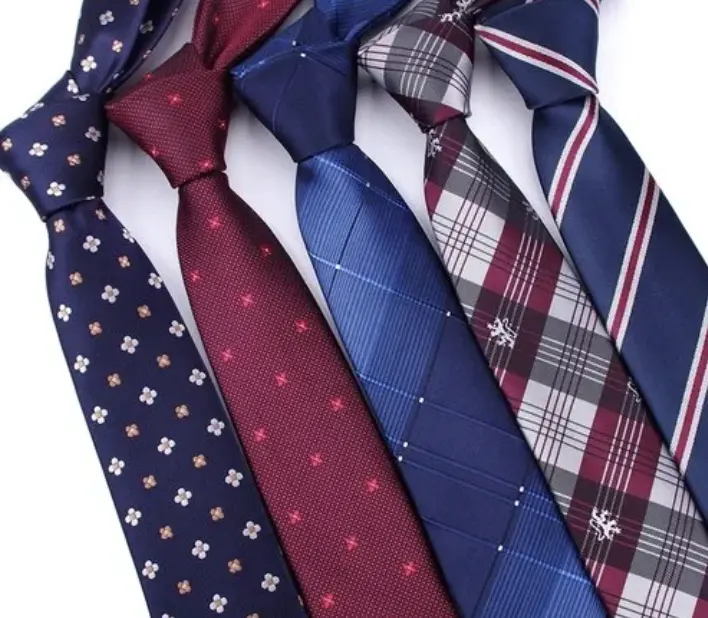
#21. Rainwear:
The water-resistant properties of polyester make it suitable for the production of rain jackets, ponchos, and other rainwear.
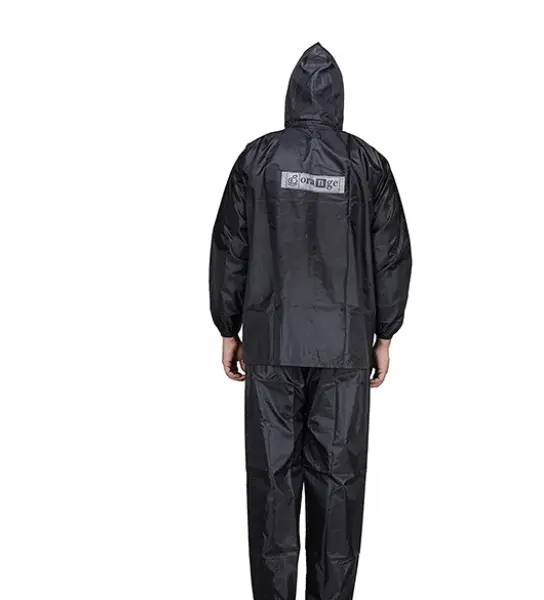
#22. Hospital Gowns:
Polyester is used in the production of hospital gowns for its comfort, ease of laundering, and cost-effectiveness.

#23. Event Decor:
In the realm of event decor, polyester is frequently used in tablecloths, chair covers, and drapes. Its availability in a wide range of colours and patterns allows event planners to create beautiful and cohesive visual themes.
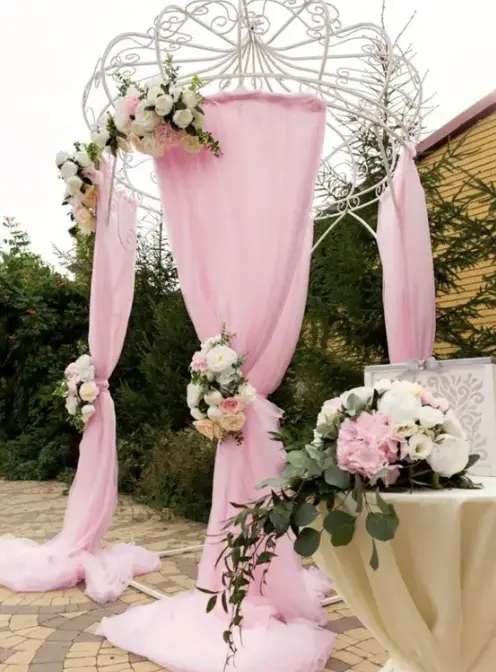
Successful Brands Utilising Polyester:
Hula Global: Innovative activewear with a perfect blend of comfort and performance.
PolyBlend Pro: High-quality polyester fabric for outdoor and sportswear with an emphasis on durability.
EcoPoly Creations: Sustainable polyester fabrics are made from recycled materials.
UrbanChic Textiles: Contemporary fashion designs for everyday wear using polyester.
TechWeave Innovations: Integration of smart textile technology into polyester fabrics for cutting-edge solutions.
Supplier Information and Location:
#1. Hula Global:
Hula Global is a leading supplier known for innovation and quality polyester fabrics. With a strong presence in Asia, particularly in China, they have successfully expanded their reach globally. Contact us to learn more.
#2. PolyBlend Pro:
Recognized for manufacturing high-quality outdoor and sportswear fabrics, PolyBlend Pro operates from multiple locations, with key facilities in the United States and Europe.
#3. EcoPoly Creations:
Committed to sustainability, EcoPoly Creations sources recycled materials to produce polyester fabrics. Headquartered in Europe, they have become a prominent supplier in the eco-conscious textile market.
#4. UrbanChic Textiles:
UrbanChic Textiles specializes in contemporary fashion designs using polyester. Headquartered in Japan, they have a strong presence in the Asian market and distribute globally.
#5. TechWeave Innovations:
TechWeave Innovations stands out for integrating smart textile technology into polyester fabrics. With a research and production facility in South Korea, they cater to the global demand for innovative textile solutions.
Iconic Products Made from this polyester clothing fabric
#1. Athletic Apparel:
Sports jerseys, workout leggings, and performance wear often feature polyester blend fabric for their moisture-wicking and stretch properties.
#2. Outdoor Jackets:
Waterproof and wind-resistant jackets for outdoor activities are commonly made from polyester fabric, providing durability and protection.
#3. T-Shirts and Tops:
Everyday casual wear, including t-shirts, tank tops, and blouses, often incorporates polyester for its comfort, easy care, and wrinkle resistance.
#4. Swimwear:
Polyester fabric, especially blends with spandex, is popular in the production of swimwear due to its quick-drying and stretch capabilities.
#5. Upholstery:
Furniture upholstery, including sofas, chairs, and cushions, often utilizes polyester fabric for its durability, stain resistance, and wide range of design options.
#6. Bedding and Linens:
Bed sheets, pillowcases, and comforters are made from polyester fabric, offering affordability, easy maintenance, and a variety of patterns.
#7. Curtains and Drapes:
Polyester is commonly used in window treatments for its lightweight nature, durability, and ability to hold vibrant colours.
#8. Backpacks and Bags:
Backpacks, tote bags, and travel bags often feature polyester fabric for its lightweight design, water resistance, and durability.
#9. Rainwear:
Rain jackets, ponchos, and umbrellas frequently use polyester fabric with water-resistant coatings for protection against the elements.
#10. Sleepwear and Pajamas:
Soft and comfortable sleepwear, including pyjama sets and nightgowns, often incorporates polyester for a cozy feel.
#11. Car Interiors:
Seat covers, car carpets, and headliners in vehicles may use polyester fabric for its resistance to wear and tear.
#12. Duffel Bags and Gym Gear:
Gym bags, duffel bags, and sports accessories often feature polyester for its lightweight and durable qualities.
#13. Flags and Banners:
Many national flags and event banners are made from polyester fabric due to their ability to hold vibrant colours and withstand outdoor conditions.
#14. Medical Scrubs:
Polyester blends are used in the production of medical scrubs for their durability, comfort, and ease of cleaning.
#15. Hiking Gear:
Outdoor gear such as hiking pants, jackets, and hats may use polyester fabric for its breathability and moisture-wicking properties.
#16. Luggage:
Suitcases, travel bags, and luggage sets often utilize polyester fabric for its lightweight construction and resistance to abrasion.
#17. Industrial Safety Clothing:
High-visibility vests, work jackets, and safety clothing in industrial settings may incorporate polyester for its durability and visibility.
#18. Tent Material:
Outdoor tents commonly use polyester fabric due to its lightweight nature, water resistance, and durability.
#19. Pet Accessories:
Pet beds, carriers, and clothing items for pets often feature polyester fabric for comfort and easy maintenance.
#20. Fashion Accessories:
Scarves, hats, gloves, and other fashion accessories may use polyester fabric for its versatility and ability to hold vibrant prints.
FAQs About Polyester Fabric:
What is polyester fabric?
Polyester fabric is a synthetic textile made from polyester fibres. It is known for its durability, wrinkle resistance, and versatility in various applications.
Are all polyester fabrics the same?
No, polyester fabrics can vary in texture, weight, and composition. Different types of polyester fabrics cater to specific needs, from clothing to upholstery.
Can I make shirts from polyester fabric?
Yes, polyester fabric is commonly used for making shirts. It is often chosen for its smooth texture, easy care, and resistance to wrinkles.
What is polyester mesh fabric used for?
Polyester mesh fabric is breathable and lightweight, making it suitable for sportswear, activewear, and items that require ventilation.
Is polyester fabric stretchy?
Polyester fabric can be stretchy, especially when blended with elastane or spandex. This blend enhances flexibility and comfort in clothing.
Can polyester fabric be used for upholstery?
Yes, polyester upholstery fabric is a popular choice for furniture due to its durability, resistance to stains, and ease of cleaning.
What is the difference between polyester and polyester elastane fabric?
Polyester elastane fabric contains elastane (spandex) fibres, providing stretch and flexibility. Regular polyester fabric may not have the same level of stretch.
Is there a difference between polyester and polyester-cotton fabric?
Yes, the polyester-cotton fabric is a blend of polyester and cotton fibres. This blend combines the strength of polyester with the breathability of cotton.
Can I paint on polyester fabric?
Yes, polyester fabric paint is designed for use on polyester textiles. It allows for creative customization and design on clothing items.
What is the texture of polyester fabric?
Polyester fabric has a smooth texture, and its feel can vary based on the specific weave or finish applied to the fabric.
Is there such a thing as stretch polyester fabric?
Yes, stretch polyester fabric contains elastane or spandex fibres, providing elasticity and stretch for comfortable clothing.
What are the types of polyester fabric?
There are various types of polyester fabrics, including knit, woven, brushed, and performance fabrics, each serving different purposes.
How does polyester compare to polyester and elastane fabric?
Polyester and elastane fabric contains both polyester and elastane fibres, offering additional stretch and flexibility compared to regular polyester.
Can I use polyester fabric for making dresses?
Yes, polyester fabric is commonly used for making dresses. It is available in various weights and finishes suitable for different dress styles.
What is polyester lycra spandex fabric used for?
Polyester lycra spandex fabric is a stretchy blend suitable for activewear, swimwear, and garments that require flexibility and recovery.
Is polyester fabric suitable for painting?
Polyester fabric paint is specifically formulated for use on polyester textiles, ensuring vibrant colours and lasting results.
What is the difference between polyester and polyester nylon fabric?
Polyester nylon fabric is a blend of polyester and nylon fibres, combining the durability of polyester with the lightweight and smooth texture of nylon.
Can I find 65 cotton and 35 polyester fabric?
Yes, fabrics with a blend of 65% cotton and 35% polyester are available. This blend combines the comfort of cotton with the durability of polyester.
What projects are suitable for black polyester fabric?
Black polyester fabric is versatile and can be used for various projects, including clothing, accessories, home decor, and upholstery.
How do I care for 65 polyester 35 cotton fabric?
Fabrics with this blend are often machine washable. Follow care instructions to maintain the fabric’s quality and longevity.
Hear a few more FAQs for polyester fabrics Click here for FAQs.
Myths and Facts About Polyester Fabric:
Myth: Polyester is not a breathable fabric.
Fact: Polyester can be breathable depending on the weave and finish. Advances in fabric technology have led to breathable polyester fabrics suitable for activewear.
Myth: Polyester is not a good fabric.
Fact: Polyester is a versatile and durable fabric. It resists wrinkles, dries quickly, and is resistant to stretching and shrinking, making it suitable for various applications.
Myth: Nylon fabric is the same as polyester.
Fact: Nylon and polyester are different synthetic fibres. While they share some characteristics, they have distinct properties, and fabrics made from each have unique qualities.
Myth: Polyester canvas fabric is only for outdoor use.
Fact: Polyester canvas fabric is versatile and can be used for various projects, including indoor upholstery, bags, and accessories.
Myth: Polyester fabric is not suitable for upholstery.
Fact: Polyester fabric is commonly used for upholstery due to its durability, resistance to stains, and ease of cleaning.
Conclusion
Polyester, the wrinkle-wrestling wonder, offers durable comfort at an easy-care price. From sporty activewear to cozy fleeces, it adapts to your needs like a chameleon. Choose recycled options for a greener vibe, and remember, while it may not sing opera like silk, it’ll keep you comfy through countless curtain calls. So, embrace the versatility of polyester and rock your own wrinkle-free style.
Statistics:
- Global Domination: Polyester accounts for an astounding 52% of global fiber production as of 2020, surpassing even cotton’s 23% share. (Source: Textile Exchange, 2020)
- Market Leader: China, the world’s textile powerhouse, produces a staggering 70% of all polyester. (Source: Statista, 2023)
- Economic Engine: The global polyester market is estimated to be worth US$85.1 billion by 2028, fueled by its diverse applications and affordability. (Source: Grand View Research, 2023)
Reliable Sources:
- Textile Exchange: https://textileexchange.org/
- Statista: https://www.statista.com/
- Grand View Research: https://www.grandviewresearch.com/
A Quote to Ponder:
“Polyester is a very interesting fiber because it can be made into so many different types of fabrics. It’s strong, durable, and wrinkle-resistant, making it a great choice for a variety of applications.” – Marie Kondo, author and tidying expert.
Read also

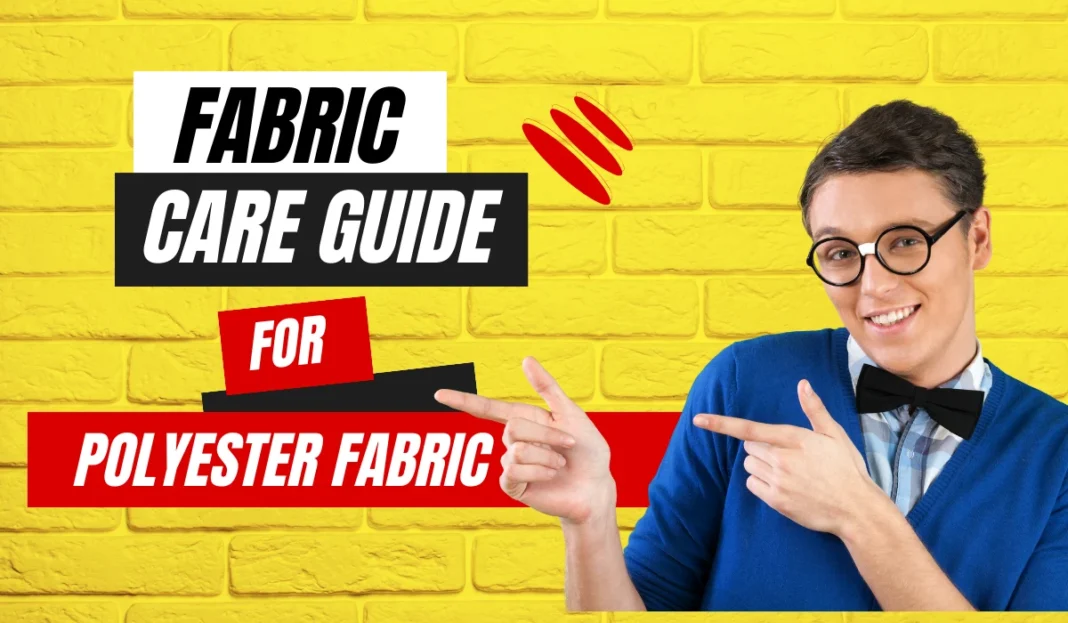
Ultimate Fabric Care Guide: Tips for Polyester Fabric
Your website is very inspiring with high-quality content. We are sure that you will find additional useful information on our website.